In the rich tapestry of avian melodies, one creature stands out for its enchanting songs and graceful presence the thrush bird.
With over 300 species scattered across the globe, thrushes are renowned for their diverse vocal repertoire and striking plumage.
From North America’s woodlands to South America’s rainforests, these birds captivate birdwatchers and scientists alike with their intriguing behaviors.
The thrush’s distinctive call echoes through the forest canopy, signaling its territory or attracting mates with rhythmic trills and intricate melodies.
Its gentle demeanor and agile flight add to its allure, making it a favorite subject for photographers and nature enthusiasts.
Join us on a journey into the fascinating world of the thrush bird, where we delve into its ecological significance, evolutionary adaptations, and cultural symbolism.
From ancient myths to modern conservation efforts, discover why the thrush bird continues to inspire wonder and admiration among humans worldwide.
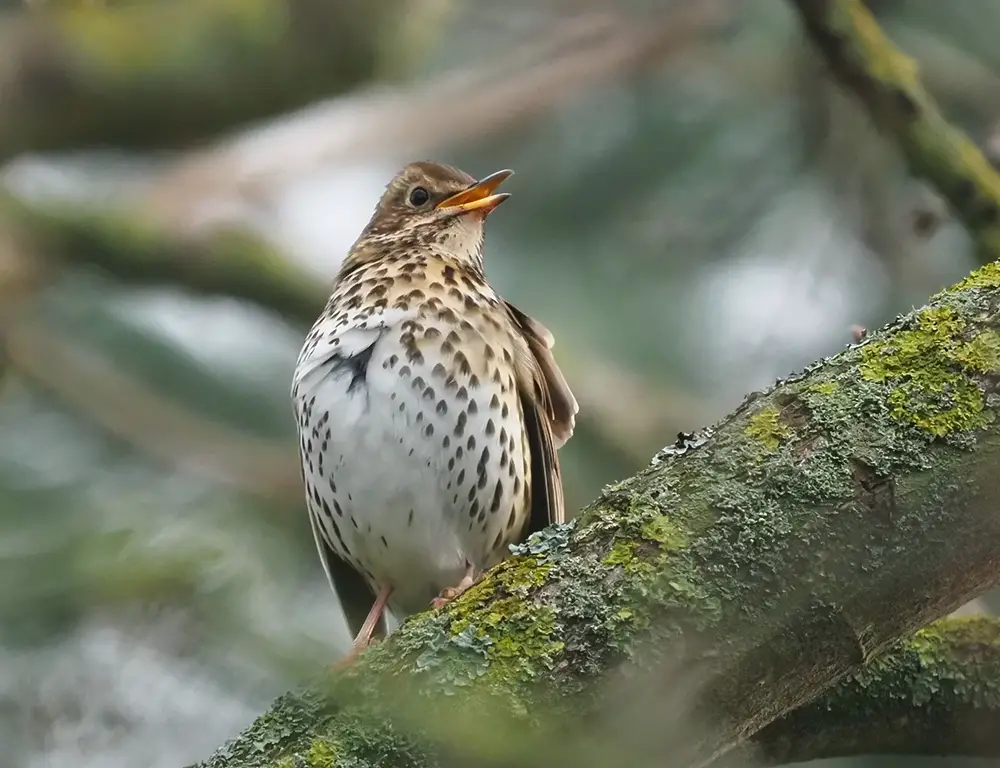
Key Physical Characteristics of the Thrush Bird
The thrush bird is characterized by several vital physical features distinguishing it from other avian species. From its beak to its tail, each aspect of its anatomy plays a crucial role in its survival, behavior, and ecological niche.
Let’s delve into these defining characteristics:
Beak
The beak of the thrush bird is typically slender and slightly curved, well-suited for its omnivorous diet. This versatile tool allows thrushes to probe for insects in the soil and leaf litter, pluck berries and fruits from branches, and crack open seeds and nuts with precision.
Plumage
Thrush birds are renowned for their diverse and often striking plumage. While coloration varies among species, many thrushes display a combination of earthy tones, such as browns, grays, and tans, which provide camouflage in their natural habitats.
Additionally, some species feature distinctive markings, including speckles, streaks, or bold eye rings, enhancing their visual appeal.
Wings
Thrush birds possess well-developed wings adapted for agile flight. Their wings are typically rounded or pointed, allowing quick maneuverability in dense vegetation or open spaces.
This aerial prowess enables thrushes to evade predators, chase insects mid-air, and undertake long-distance migrations during seasonal movements.
Tail
The tail of the thrush bird varies in length and shape depending on the species. The tail is short and square in some thrushes, while in others, it may be longer with a distinctive notch or fork.
This tail morphology aids in balance and stability during flight and in navigating tight spaces while foraging or perching.
Legs and Feet
Thrush birds have sturdy legs and feet adapted for perching and ground foraging. Their feet typically feature three forward and one backward-facing toe, providing a secure grip on branches and substrates.
This arrangement facilitates efficient movement through varied terrain, whether hopping along the forest floor or clinging to vertical surfaces.
Size
Thrush birds exhibit a wide range of sizes, from minor to medium-sized species. For example, the Veery (Catharus fuscescens) measures around 6–7 inches, while the American Robin (Turdus migratorius) can reach lengths of 9–11 inches.
Despite these differences, all thrushes share a joint adaptability to diverse habitats and ecological niches.
Vocal Apparatus
One of the most distinctive features of thrush birds is their intricate vocalizations. The structure of their syrinx, the avian vocal organ located at the base of the trachea, allows for the production of a wide range of melodic songs and calls.
Thrushes are renowned for their clear, flute-like notes, often delivered with remarkable clarity and precision.
Eye and Beak Ring
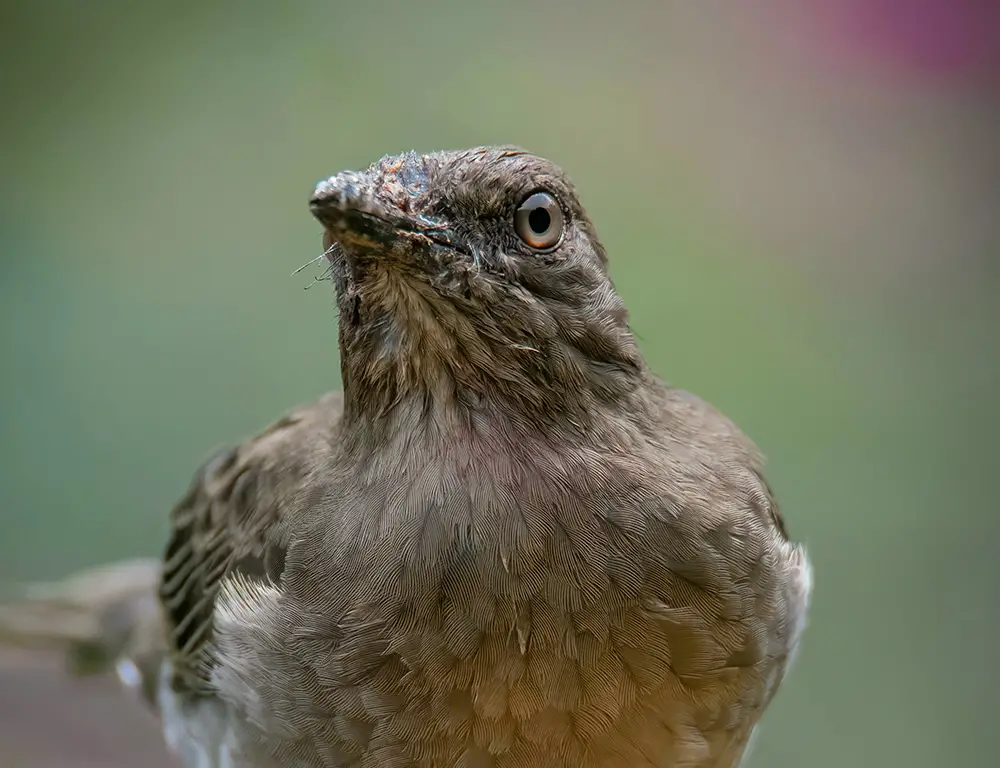
Some thrush species exhibit distinct eye rings or arcs, colored rings of feathers, or bare skin surrounding the eye. These eye rings serve various functions: communication, species recognition, and mate selection.
Additionally, certain species may have colored or contrasting markings around the base of the beak, known as beak rings, which further enhance their visual appearance.
Breeding and Food Habits of the Thrush Bird
The breeding behavior of thrush birds reflects their strong commitment to reproductive success and ensuring the survival of their offspring in often challenging and competitive environments.
Taxonomy of the Thrush Bird
| Taxonomy Level | Classification |
| Kingdom | Animalia |
| Phylum | Chordata |
| Class | Aves |
| Order | Passeriformes |
| Family | Turdidae |
| Genus | Turdus |
| Species | Varies by species |
Food Habitat
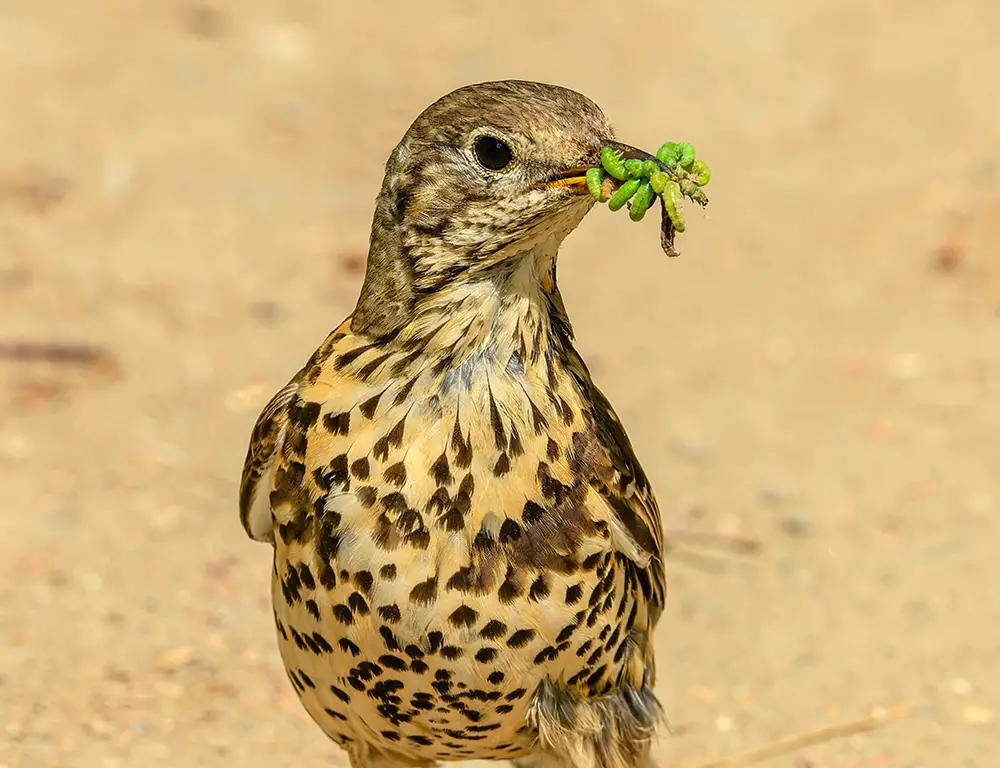
Thrush birds are primarily omnivorous, feeding on a varied diet depending on their habitat and seasonal availability.
Thrushes forage for insects such as beetles, ants, caterpillars, and grasshoppers by probing through leaf litter, soil, and crevices in bark.
Many thrush species consume a variety of berries and fruits, including elderberries, holly berries, and wild grapes, especially during the fall and winter months when insects are scarce.
Some thrush species supplement their diet with seeds and nuts, such as acorns, pine nuts, and sunflower seeds, particularly in urban or suburban environments where food sources are abundant.
Nesting Habits
| Nesting Habit | Description |
| Nest Location | Thrush birds typically build their nests in shrubs, trees, or dense vegetation, often near water sources or in forested areas. |
| Nest Structure | Nests are constructed from twigs, grasses, leaves, and mud, woven together to form a sturdy cup-shaped structure. |
| Egg Laying | Females lay 2-5 eggs, incubated for 10-14 days. |
| Parental Care | Both parents incubate eggs and feed hatchlings, with fledglings leaving the nest after 10-15 days. |
Breeding
Thrush birds typically breed during the spring and summer, with peak breeding activity occurring in temperate regions.
Breeding behavior may vary slightly among species. Male thrushes often engage in elaborate courtship displays to attract mates, which may involve singing, wing-fluttering, and ritualized movements.
During the breeding season, thrushes defend territories through vocalizations and aggressive displays, establishing nesting sites and foraging areas.
Incubation and Feeding
Both male and female thrushes contribute to nest building, gathering materials, and constructing a sturdy structure to protect their eggs and young.
After the eggs are laid, both parents take turns incubating the eggs and feeding the hatchlings, providing essential care and protection until the fledglings are ready to leave the nest.
Range Map of the Thrush Bird
American Robin (Turdus migratorius) is found throughout North America, from Alaska and Canada to Mexico and Central America. Song Thrush (Turdus philomelos) is native to Europe, North Africa, and parts of Asia, including the United Kingdom and Scandinavia.
Fieldfare (Turdus pilaris) breeds in northern Europe and Asia, with wintering grounds extending to southern Europe and parts of the Middle East.
The Swainson’s Thrush (Catharus ustulatus) breeds in North America, primarily in boreal forests, and migrates to Central and South America for the winter.
Common Diseases and Treatments of Thrush Bird
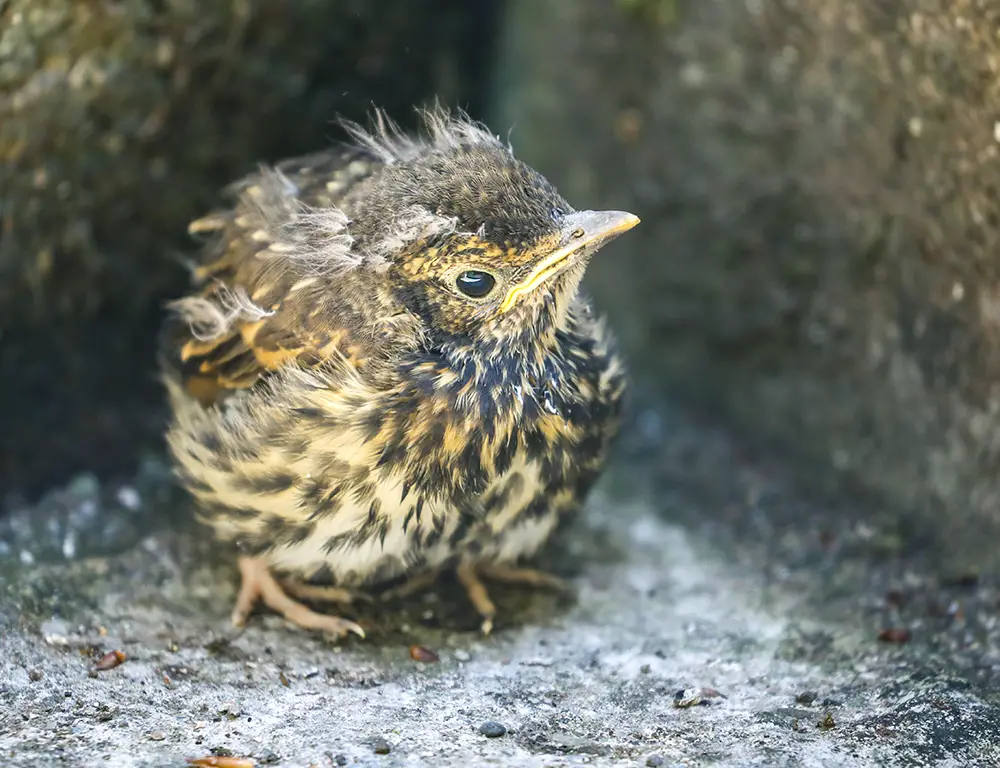
Like all wild animals, Thrush birds are susceptible to various diseases and health issues. Some common diseases affecting thrushes include:
Avian Pox
Avian pox is a viral disease that can affect thrush birds’ skin, eyes, and respiratory systems. Treatment typically involves supportive care, such as providing a clean environment and proper nutrition, as no specific antiviral medication is available.
Parasitic Infections
Thrushes may suffer from parasitic infections, such as mites and lice, and internal parasites like worms. Treatment usually involves antiparasitic medications prescribed by a veterinarian and measures to improve hygiene and prevent reinfection.
Respiratory Infections
Respiratory infections, including bacterial or fungal pneumonia, can occur in thrush birds, especially during stress or when exposed to poor environmental conditions.
Treatment may involve antibiotics or antifungal medications, depending on the underlying cause.
Lead Poisoning
Thrush birds can ingest lead from contaminated sources, such as lead-based ammunition or environmental pollutants. Lead poisoning can cause neurological and digestive problems and may require chelation therapy to remove the lead from the bird’s system.
Trauma and Injuries
Thrushes may suffer from injuries due to collisions with windows, vehicles, or predators. Treatment involves assessing and addressing the extent of the injuries, providing supportive care, and possibly administering pain relief or antibiotics to prevent infections.
Is the Thrush Bird Endangered?
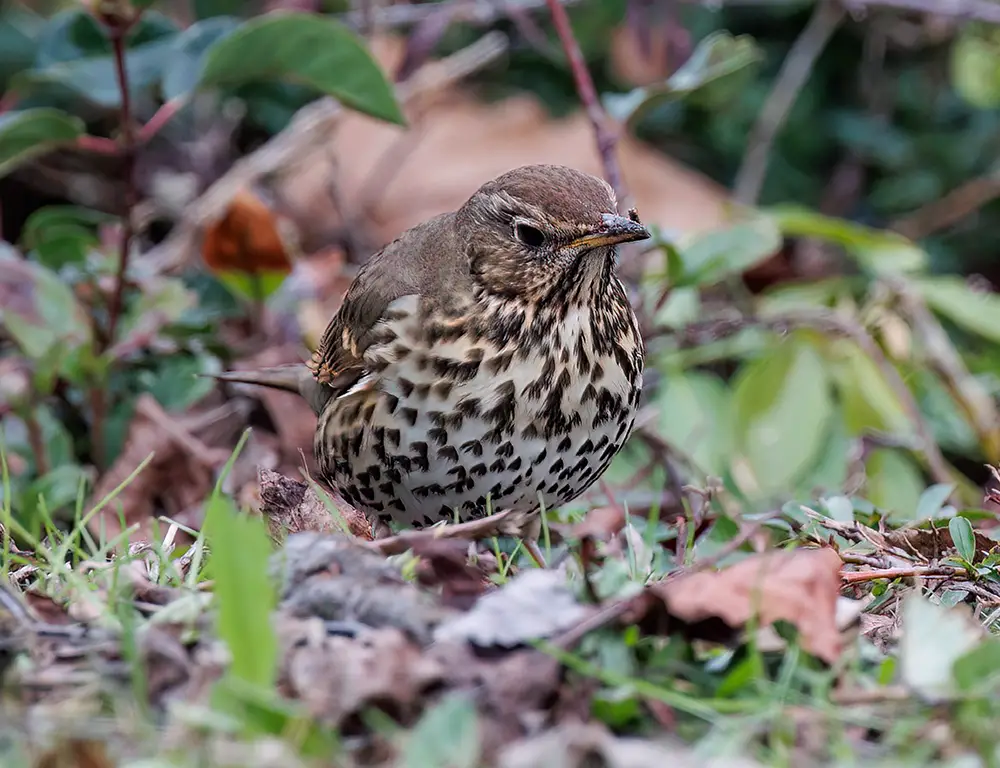
The conservation status of thrush birds varies depending on their species and geographic location.
While some thrush species face habitat loss, pollution, and climate change threats, others maintain stable populations or thrive in specific environments. Here’s a brief overview of the conservation status of some common thrush species:
American Robin (Turdus migratorius)
The American Robin is not considered endangered and is listed as a species of most minor concern by the International Union for Conservation of Nature (IUCN).
Song Thrush (Turdus philomelos) and Blackbird (Turdus merula)
The Song Thrush is classified as “Least Concern” by the IUCN, although populations have declined in some regions due to habitat loss and changes in agricultural practices.
The European Blackbird is also categorized as “Least Concern” by the IUCN, with stable populations across its range.
Fieldfare (Turdus pilaris) and Swainson’s Thrush (Catharus status)
Fieldfare populations are generally stable, and the species is not considered endangered. Swainson’s Thrush populations are declining in some regions due to habitat loss and degradation, but the species is not currently classified as endangered.
6 Fun Facts About the Thrush Bird
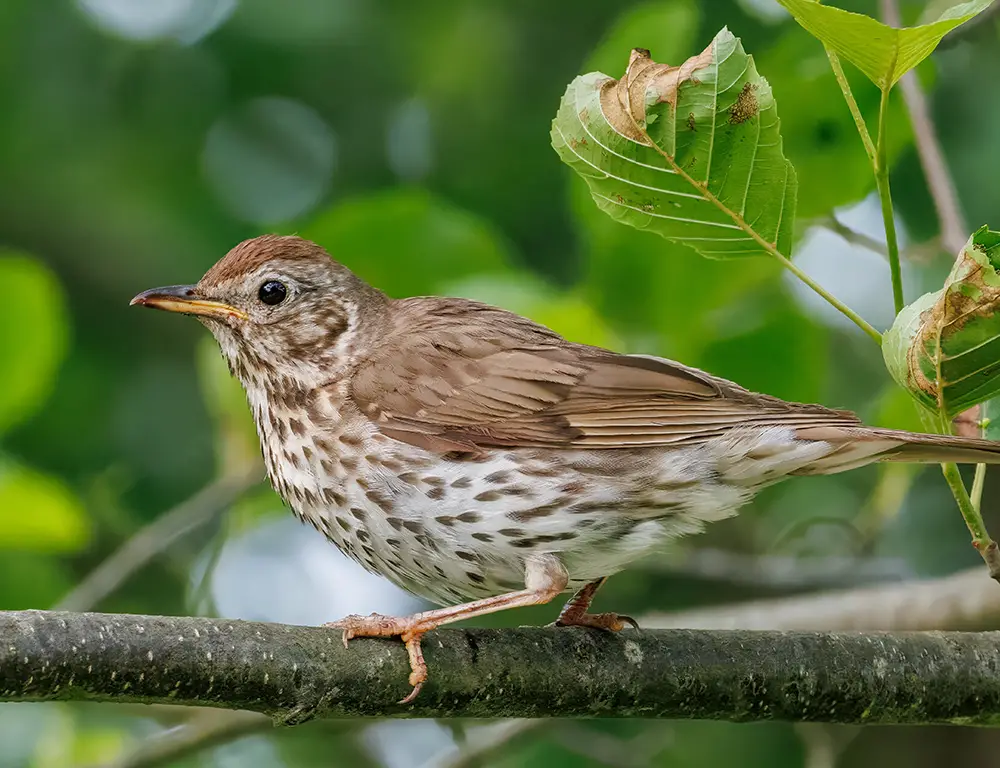
Want to learn more about the thrush? Let’s explore some fun facts.
1. Melodic Mimicry
Thrush birds are skilled vocal mimics, capable of imitating the songs of other bird species and environmental sounds like car alarms or cell phone ringtones.
2. Long-Distance Migrants
Several thrush species undertake impressive long-distance migrations, traveling thousands of miles between breeding and wintering grounds.
For example, the Swainson’s Thrush migrates yearly from North America to Central and South America.
3. Berry Buffet
Thrushes play an essential role in seed dispersal by consuming berries and fruits and later dispersing the seeds through their droppings, helping to regenerate forests and other habitats.
4. Dawn Chorus Conductors
Thrush birds are often among the first to sing at dawn, leading the “dawn chorus” as they announce their territories and attract mates with their melodious songs.
5. Mossy Masterpieces
Some thrush species, such as the Song Thrush, incorporate moss and lichen into their nests, creating camouflaged structures that blend seamlessly into their surroundings.
6. Cultural Symbols
Thrush birds have appeared in folklore and mythology worldwide, symbolizing everything from love and fidelity to trickery and transformation in various cultures.
FAQs
What is a thrush bird?
A thrush bird is a member of the family Turdidae, which includes over 300 species known for their melodic songs and diverse plumage. They are found worldwide, inhabiting forests, woodlands, and urban areas.
What do thrush birds eat?
Thrush birds have omnivorous diets, feeding on various insects, berries, fruits, seeds, and nuts. Their diet varies depending on the species and food availability in their habitat.
Are thrush birds endangered?
The conservation status of thrush birds varies by species. While some species may face habitat loss or climate change threats, many thrush populations remain stable or are actively managed through conservation efforts.
How do thrush birds communicate?
Thrush birds communicate primarily through vocalizations, producing melodious songs and calls to defend territories, attract mates, and communicate with their offspring. They are also known for their intricate courtship displays.
Where do thrush birds migrate?
Many thrush species undertake impressive long-distance migrations, traveling thousands of miles between breeding and wintering grounds.
For example, species like the Swainson’s Thrush migrate from North America to Central and South America during winter.
Conclusion
The thrush bird’s significance extends beyond its charming appearance and melodic songs. As a key player in ecosystems worldwide, thrushes play vital roles in seed dispersal, insect control, and maintaining biodiversity.
Their adaptability to diverse habitats and ability to thrive in urban and rural environments underscore their resilience in environmental change.
Furthermore, thrush birds’ cultural and symbolic importance spans centuries, with their songs inspiring poets, musicians, and artists alike.
From ancient folklore to contemporary literature, these birds continue to captivate human imagination and serve as ambassadors for the natural world.
As stewards of the planet, we are responsible for protecting and conserving the habitats of thrush birds and other wildlife species.
By understanding and appreciating the intricate connections between thrushes and their environments, we can work together to ensure a harmonious future for birds and humans.
